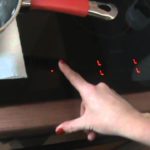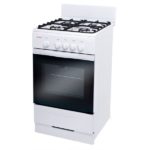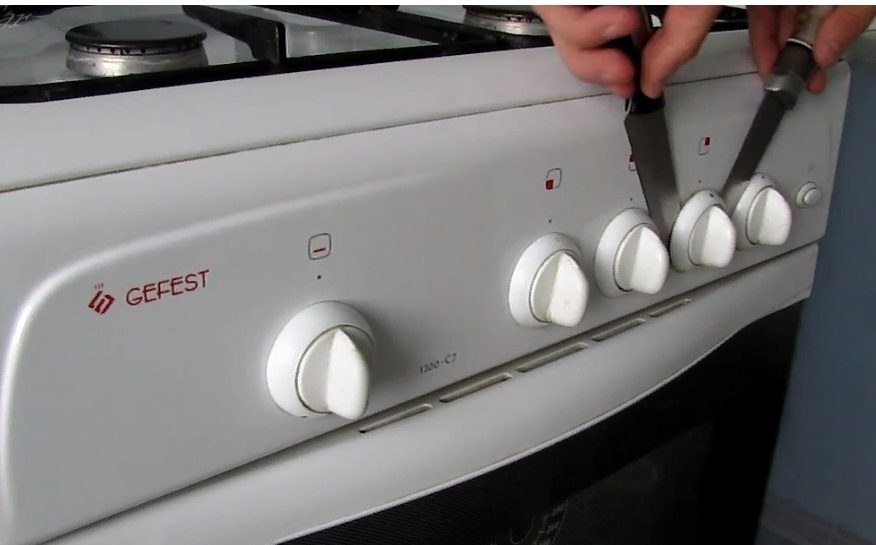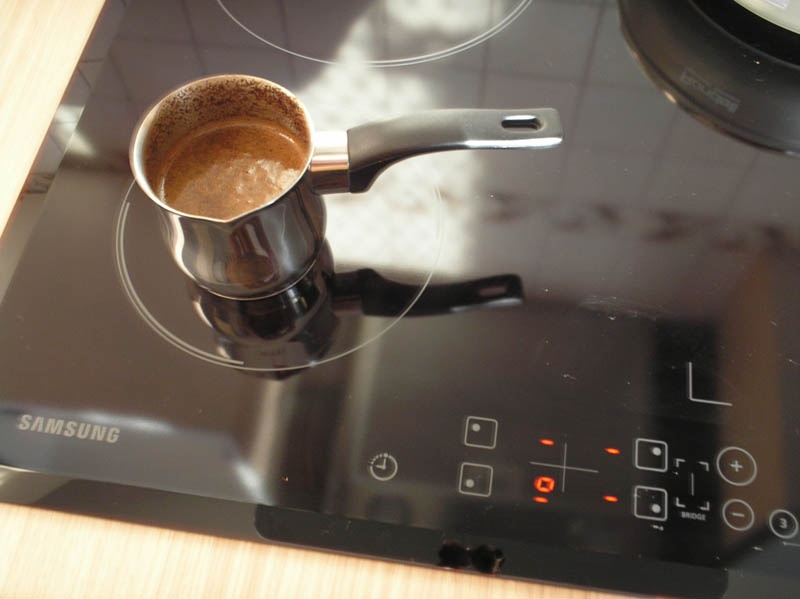How to choose an electric stove
Ever since man realized that food after heat treatment is much tastier, he has been improving the means for cooking it - first, coals from a fire, then wood and coal stoves. After natural gas production was mastered, gas stoves were invented. The invention dates back to the nineteenth century and belongs to the Englishman James Sharpe. Electric stoves for cooking appeared in 1893 thanks to the Canadian Thomas Ahern. The German company AEG began serial production in 1908. And what the situation is today will be described in the article - what electric stoves exist, the criteria for their selection, as well as advice on which device is suitable for a particular room.
The content of the article
Selection by slab type
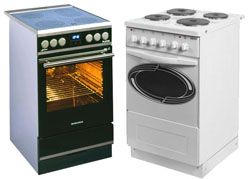
By type, electric stoves can be divided into three large classes:
- Portable, or portable - small-sized devices with one or two heating surfaces, are used mostly in dachas, or as a temporary replacement for a normal, fully functional stove. In case of frequent business trips it can also serve well.
- Built-in hobs, complete with a kitchen set selected to the owner’s taste.
- The classic option is a combined electric stove and oven.This type of appliance consumes quite a lot of power and takes up a lot of space; they are purchased if the size of the kitchen allows you to accommodate a large stove, and the wiring meets the requirements for power consumption.
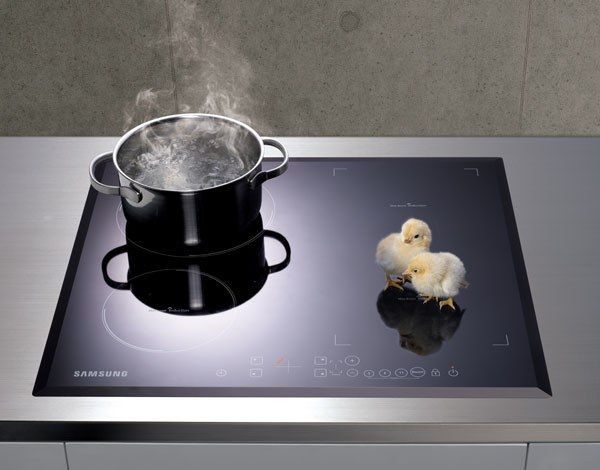 Built-in models can have a different number of burners, which determines their dimensions. As a rule, this number varies from three to seven. Classic slabs can be either narrow or full-size. There are more cooking zones on full-size stoves than on narrow stoves.
Built-in models can have a different number of burners, which determines their dimensions. As a rule, this number varies from three to seven. Classic slabs can be either narrow or full-size. There are more cooking zones on full-size stoves than on narrow stoves.
As a coating used to protect electric stoves from corrosion and environmental influences, the following are used:
- heat-resistant, shockproof enamel;
- glass ceramics and tempered glass;
- stainless steel.
Each of the coatings has its own advantages and disadvantages. Enamel, for example, makes it possible to choose products in a color scheme that matches the interior, but is relatively fragile. Stainless steel is very durable and reliable, the downside is that it gets dirty quickly. Glass ceramics and tempered glass give the stove an expensive and presentable look, but the material is not resistant to mechanical damage.
Selection by oven type
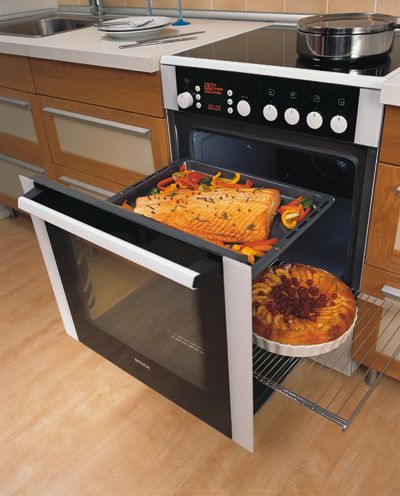
Ovens are sold both independent of the hob and dependent. Since we are talking about choosing an electric stove, in this case we can only talk about the second option.
Based on their dimensions, ovens are divided into large, full-size and compact. Their sizes are respectively:
- enlarged 90×45 cm;
- full size 60x45 cm;
- compact 45x45 cm.
The depth of all the above oven sizes is 55-60 cm.
The disadvantage of combined devices is that the control panel is overloaded and the need to bend down when using the oven, which cannot be said about stand-alone devices. Plus, and quite boldly, it saves money when purchasing two devices instead of one.
By what criteria to choose
Speaking of the fact that the size of kitchens in different homes varies greatly, as does the wiring, the main selection criteria are the dimensions, number and size of burners, and depending on the price of the product, also the functionality and type of control.
Dimensions
Depending on the types of electric stoves described above, the required amount of space for them varies. While portable and built-in hobs do not require much space, the same cannot be said about classic bulky stoves.
The standard height for an electric stove is considered to be 85 cm. The width, depending on the type and model, ranges from 50 to 90 cm. The classic version, the most common, is 60 cm. The depth, as a rule, is the same size of 60 cm.
Size and number of burners
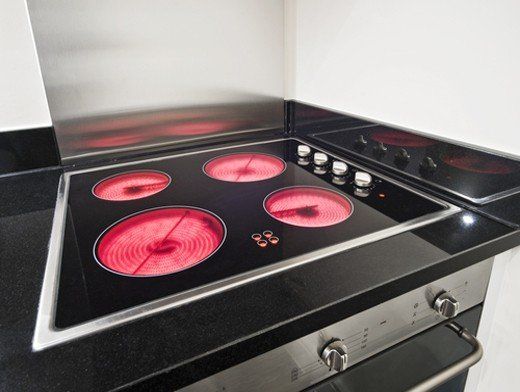
We should not forget that when several burners operate simultaneously, the electric meter begins to rotate like crazy due to the very high energy consumption of the devices. Therefore, it is impossible to say for sure whether a large number of large burners is an advantage or disadvantage. It all depends on how necessary these expenses are. Again, the more burners and their dimensions, the larger and more massive, as a result, the stove itself will be.
Functionality
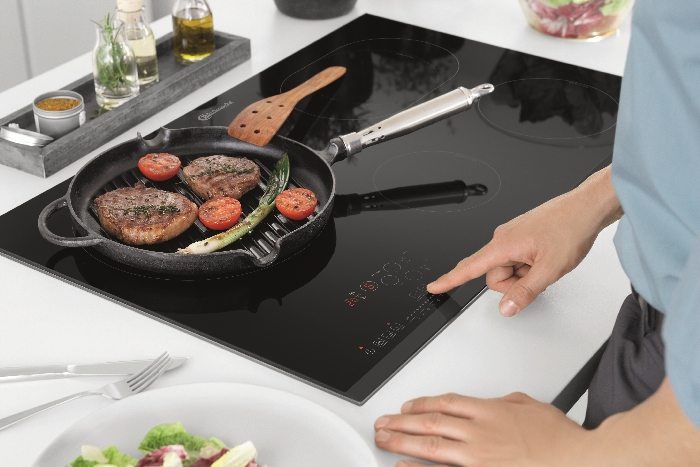
A large number of electronics with many functions is good, but not always. For many housewives, most, if not all, functions may remain unclaimed.And as practice shows, electronics fail the fastest, and replacing them costs a lot of money. In short, the most popular features on new electric stoves are:
- adjustable burner size for dishes;
- multi-circuit burners with an increased heating radius;
- blocking the panel from accidental starts - useful if there are small children at home;
- timer;
- intense heating;
- auto-boiling – bringing the liquid to a boil, followed by a decrease in temperature.
Control type
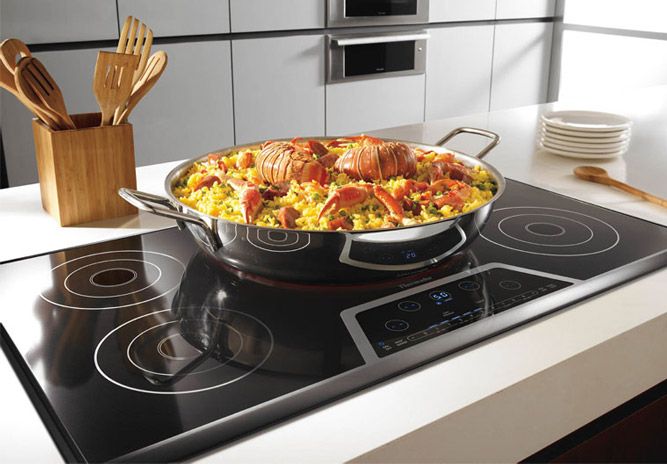
An electric stove can be controlled either mechanically or electronically. Electronics provides the following capabilities:
- timer control;
- indication of operating modes;
- control over infrared sensors that measure the temperature of the dishes;
- using programs to operate the device;
- possibility of touch control of the panel.
What to look for when choosing, tips
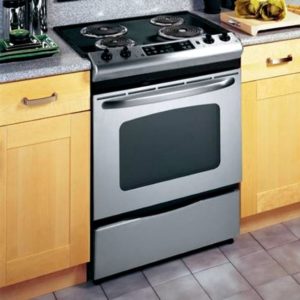 The first thing you should know about the stove is its overall dimensions. Otherwise, it may turn out that it will not fit into the niche prepared for it.
The first thing you should know about the stove is its overall dimensions. Otherwise, it may turn out that it will not fit into the niche prepared for it.
Secondly, you should purchase goods in specialized stores and make sure that they have a certificate and a quality guarantee. It is also worth immediately stipulating the terms of warranty service and finding out what is included in it.
When purchasing a product, it must be inspected for mechanical damage, chips, dents and other defects. If they are found, the product should be replaced or the purchase should be refused.
The last important parameter is the power consumption of the electric stove. Before purchasing, you should make sure that the wiring in the house can handle the load.

